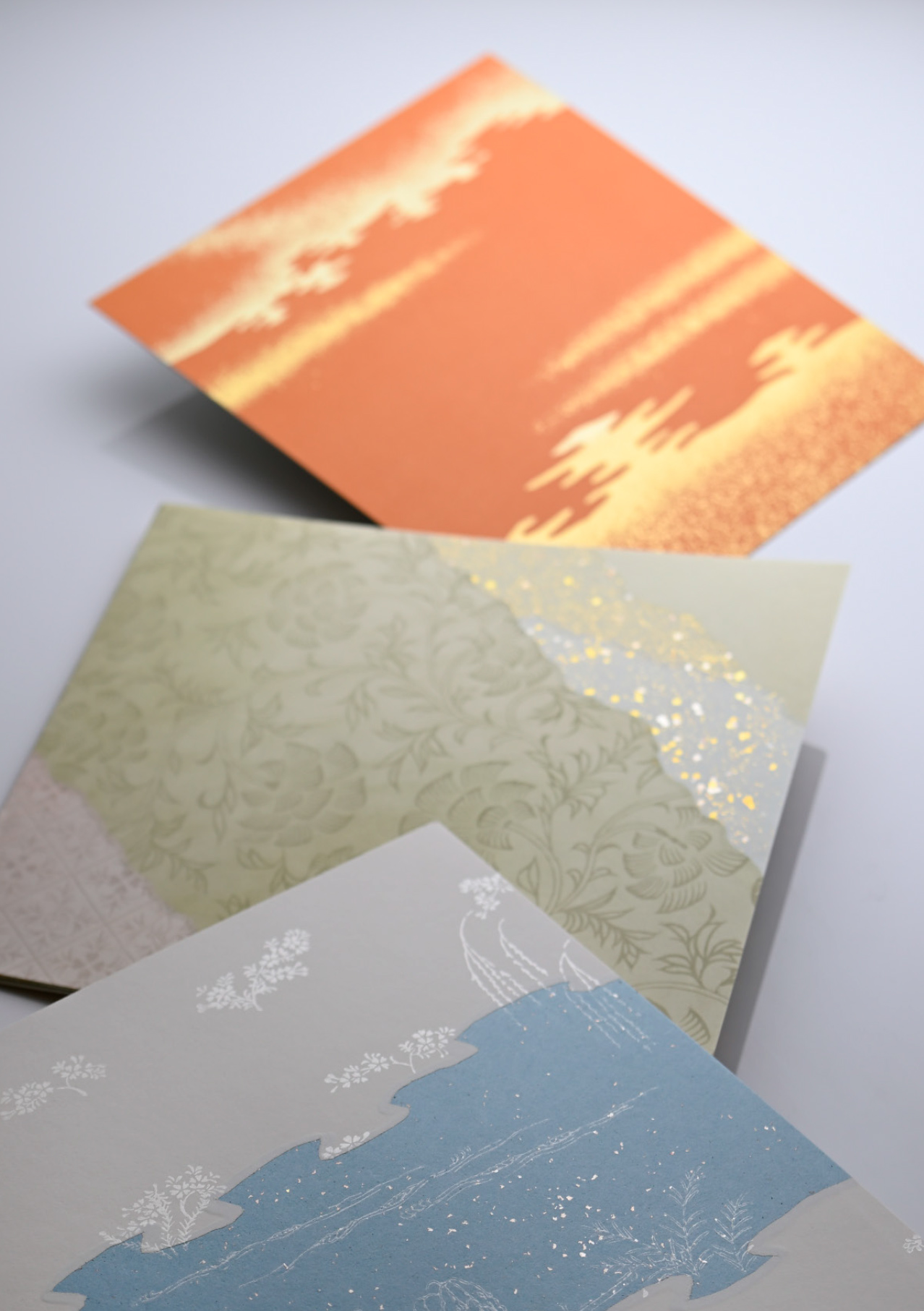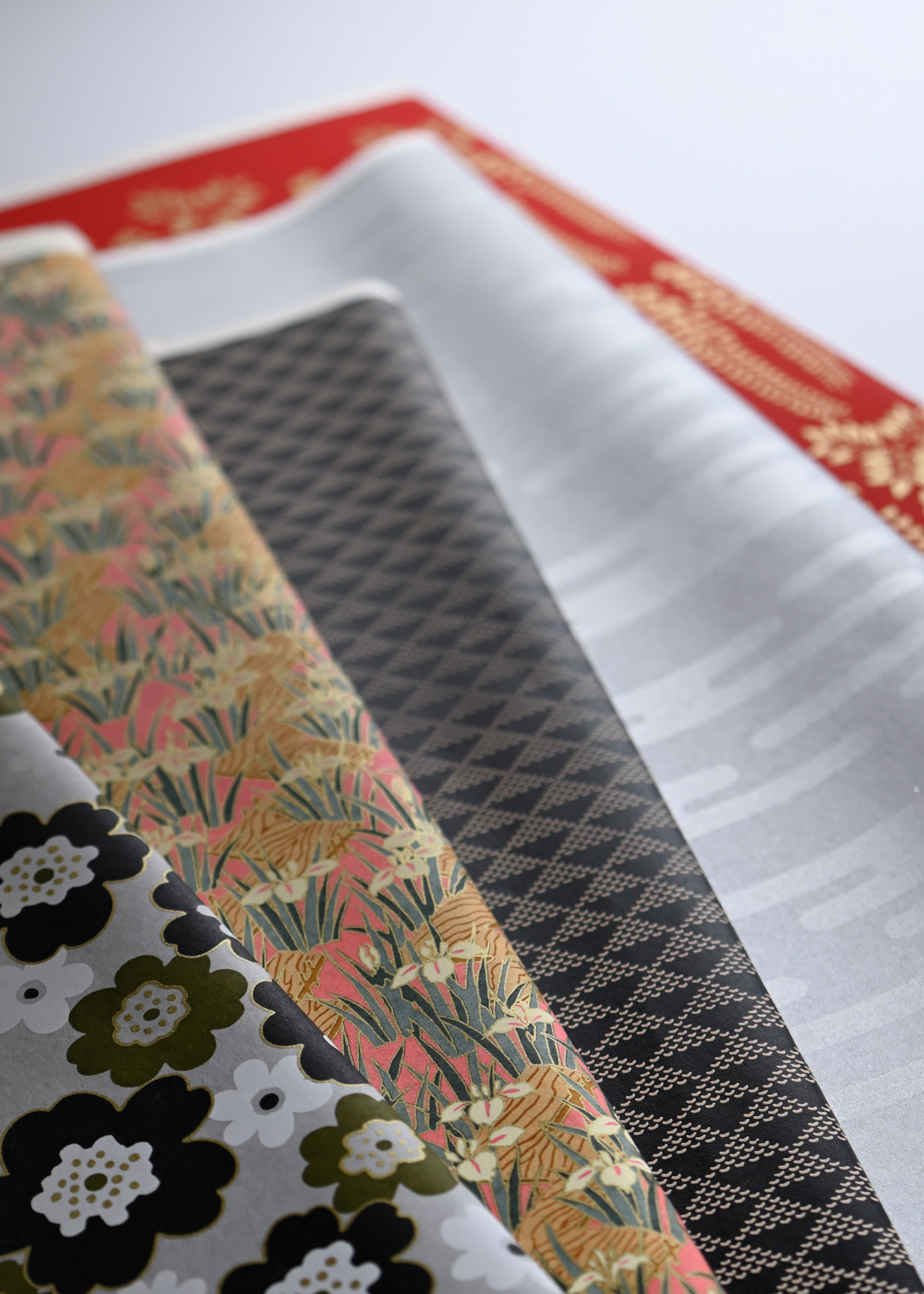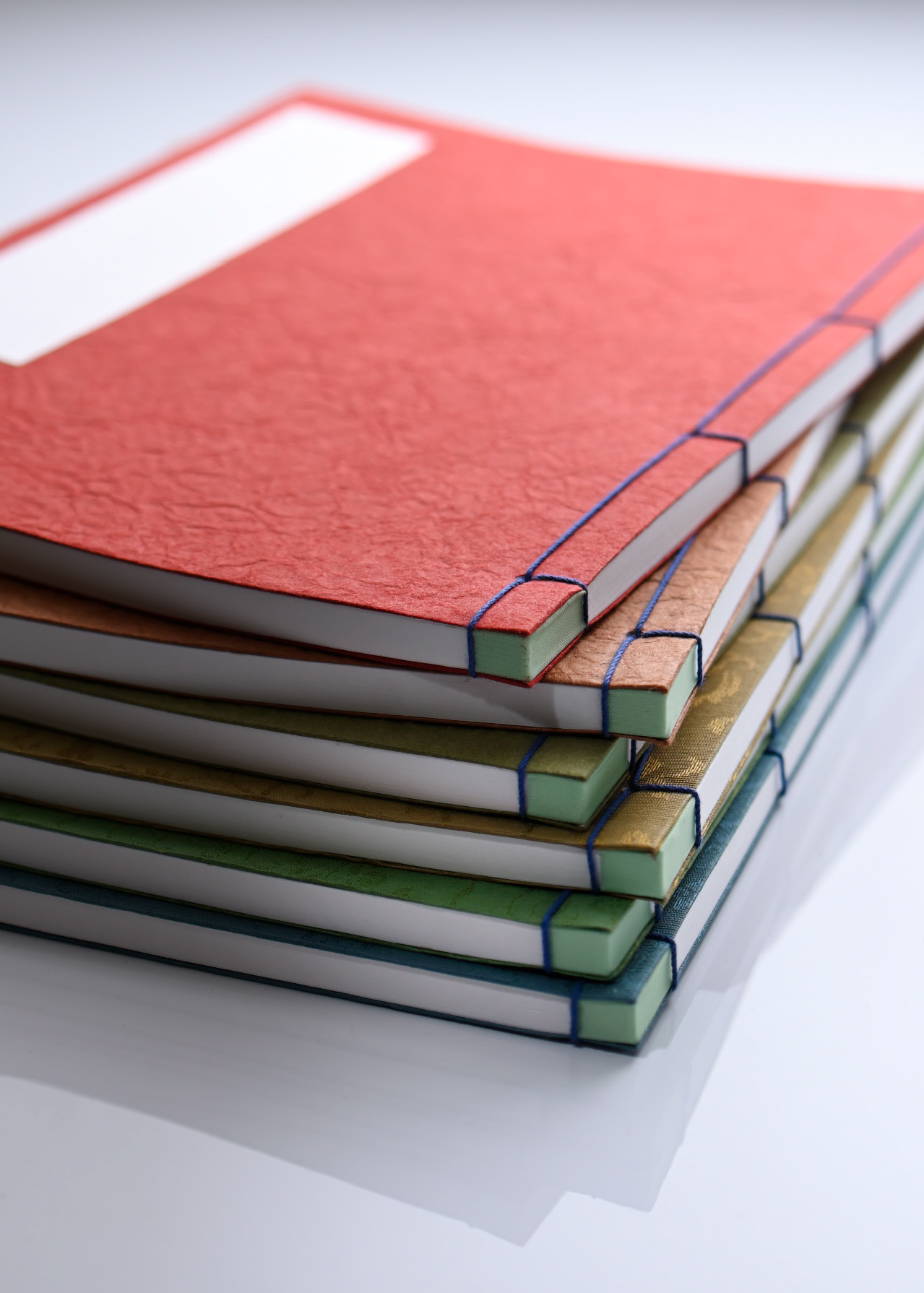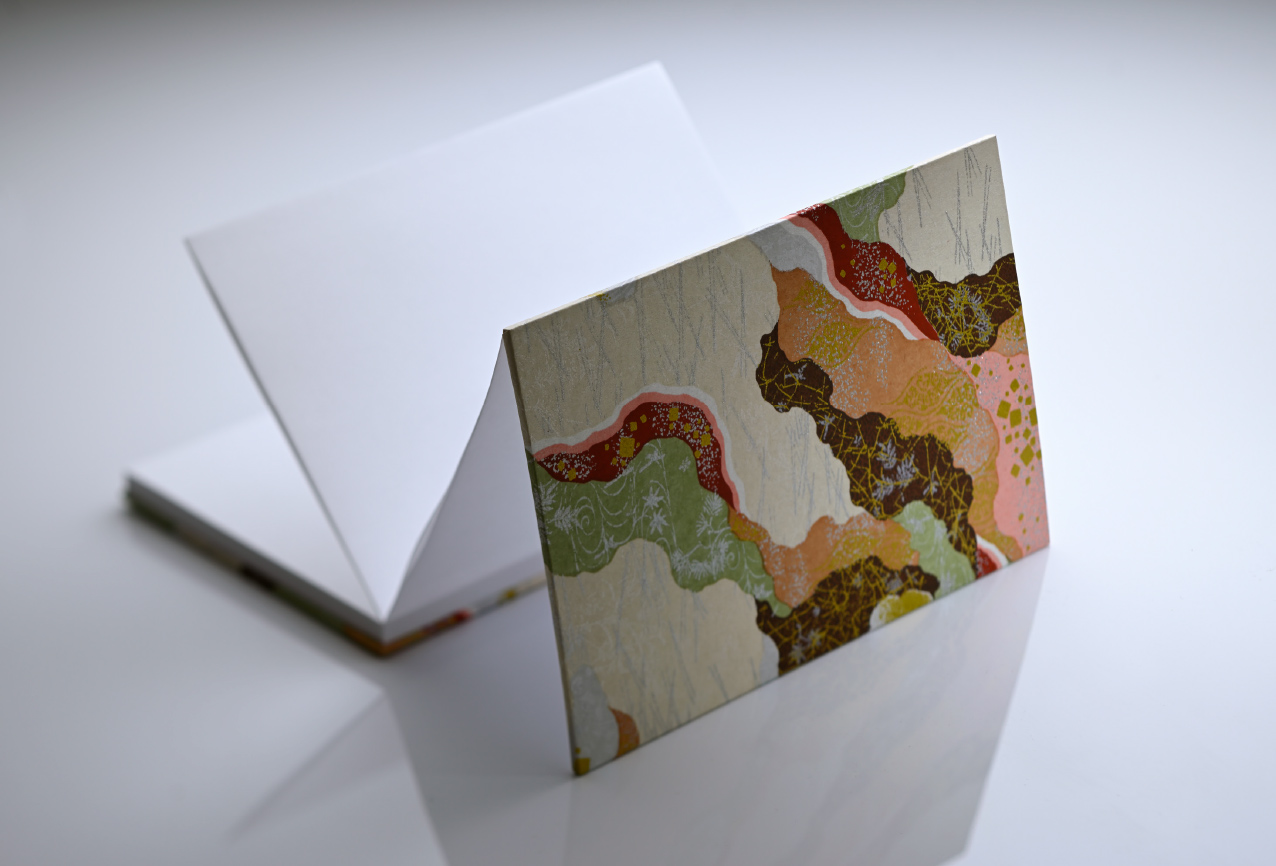京の色紙短冊和本帖 京都色紙短冊協同組合
KYO-SHIKISHI,TANZAKU & WABONCHOPAPER 1
1
- 昔ながらの手仕事で作られる色紙。本来は和歌などの書を記すが、このまま飾る人も多いという。
色紙はおもに正方形、短冊は色紙を簡略化した長方形の厚紙で、ともに書画や詩歌を描くためのもの。和本帖は、俳句や和歌、絵画や旅日記などを留めるために生まれたもので、糸で綴じられたものや折手本、巻物などの種類があります。色紙は、もとは染紙一般の呼称で、平安時代(8世紀)には、この染紙で装飾した歌集や詩書が作られるとともに、屏風や襖に描いた山水画や仏教画の一部に画にちなんだ詩歌を記すための四角い余白をとることを「色紙型」と呼んだことに由来します。鎌倉時代(13世紀)には、現在のような、染料や顔料で紙を染め、金砂子や金銀箔を撒くなど華やかな装飾がほどこされた、書画を記すための方形の厚紙という形が確立したと考えられています。朝廷や寺院で用いられたことから京都で発展し、現在でも、国内の色紙と短冊の90%以上が京都で生産されています。
Shikishi colored paper is usually square, while tanzaku is a simplified form made of rectangular cardboard. Both are used for write calligraphy and to inscribe poetry. The wabonchō is a traditional book created to hold haiku, waka poems, paintings, travel diaries, etc. Various types of wabonchō exist, including those made with folded paper, scrolls or those bound by thread. Shikishi was originally a general name for dyed paper. During the Heian period (8th century), shikishi came to be used for songbooks and poetry anthologies. It also became a part of landscape and Buddhist paintings used to decorate folding screens or sliding doors. The technique of taking a poem written on colored paper and attaching it to a door or screen painting is known as shikishi-gata. In the Kamakura period (13th century), the current form of writing calligraphy on square cardboard paper became established, and the paper could be colored by with dyes, sprinkled with gold dust or decorated with gold and silver foil.Traditional papermaking developed in Kyoto because of the presence of the Imperial Court and the temples, and even today, more than 90% of domestic colored paper and strips are produced in Kyoto.
 2
2
 3
3
 4
4
- : 木版で手刷りされた千代紙。
- : 和綴じの帖面。
- : 折手本。表紙には、千代紙を千切って貼る「ちぎり絵」で文様が施されている
(1,2,3,4 すべて株式会社長谷川松寿堂)
1: Shikishi made by traditional handicrafts. Originally made for writing poems, they are often used as decoration without the writing. 2: Chiyogami handprinted with a woodblock. 3: A Japanese bound booklet. 4: A folded copybook. The front cover is decorated with a chigiri-e pattern, which is created by cutting and cutting a piece of chiyogami. (1,2,3,4 Hasegawa Shojudo)

